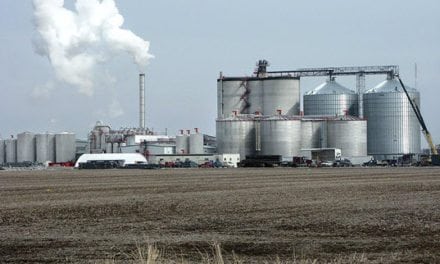Crude Oil Prices Break Over $50
- Head and shoulders pattern nears completion
- Oil supply/demand data are ambiguous
- Special exceptions threaten OPEC deal
- Natural gas stocks close in on 2015 levels.

The Matrix
Powerhouse has been watching a developing inverted head and shoulder pattern on the weekly WTI crude oil chart since late August. In February, crude oil prices fell to $26 per barrel. Since then, the value of crude oil has nearly doubled.
Importantly, prices have moved over $50.30. And, as we have noted before, a solid break above that level completes the h/s pattern and opens the way to higher crude oil prices in the weeks ahead.
Strength in crude oil prices reflects declining domestic crude oil stocks. Data released by the Energy Information Administration showed a three million barrel draw in supplies during the week ending September 30. And in the aggregate, crude oil stocks fell 26 million barrels.
Ironically this comes against an improbable backdrop of declining refinery demand in the United States. Utilization rates have fallen in response to ongoing fall refinery maintenance.

Supply/Demand Balance
Supply/demand data in the United States for the week ending September 30, 2016 were released by the Energy Information Administration.
Total commercial stocks of petroleum decreased 11.2 million barrels during the week ending September 30, 2016.
Builds were reported in stocks of gasoline, K-jet fuel, and propane. Draws were reported in stocks of fuel ethanol, distillates, residual fuel, and other oils.
Commercial crude oil supplies in the United States decreased to 499.7 million barrels, a draw of 3.0 million barrels.
Crude oil supplies increased in three of the five PAD Districts. PAD District 1 (East Coast) crude oil stocks expanded 1.2 million barrels, PADD 2 (Midwest) crude oil stocks grew 1.1 million barrels, and PADD 4 (Rockies) stocks increased 0.4 million barrels. Crude oil stocks in PADD 3 (Gulf Coast) declined 4.3 million barrels. PADD 5 (West Coast) crude oil stocks experienced a draw of 1.3 million barrels.
Cushing, Oklahoma inventories increased 600,000 barrels to 62.7 million barrels.
Domestic crude oil production decreased 30,000 barrels daily to 8.467 million barrels per day.
Crude oil imports averaged 7.710 million barrels per day, a daily decrease of 30,000 barrels. Exports fell 67,000 barrels daily to 440,000 barrels per day.
Refineries used 88.3 per cent of capacity, a decrease of 1.8 percentage points from the previous report week.
Crude oil inputs to refineries decreased 302,000 barrels daily; there were 16.032 million barrels per day of crude oil run to facilities. Gross inputs, which include blending stocks, decreased 324,000 barrels daily to 16.283 million barrels daily.
Total petroleum product inventories saw a decrease of 8.2 million barrels from the previous report week.
Gasoline stocks increased 0.2 million barrels; total stocks are 227.4 million barrels.
Demand for gasoline increased 511,000 barrels per day to 9.390 million barrels daily.
Total product demand increased 1.335 million barrels daily to 20.561 million barrels per day.
Distillate fuel oil supply decreased 2.4 million barrels; total stocks are 160.7 million barrels. National distillate demand was reported at 3.875 million barrels per day during the report week. This was a weekly increase of 103,000 barrels daily.
Propane stocks increased 0.7 million barrels to 104.0 million barrels. Current demand is estimated at 1.005 million barrels per day, an increase of 33,000 barrels daily from the previous report week.
Natural Gas
According to the Energy Information Administration:
Working gas stocks post second-largest build of 2016 refill season, but are still below historical norms. Net injections into storage totaled 80 Bcf, compared with the five-year (2011–15) average net injection of 95 Bcf and last year’s net injections of 96 Bcf during the same week. This marks the second-largest net injection of the 2016 refill season, just below the 82 Bcf build posted for the week ending May 27. The 2016 refill season remains on pace to be the only refill season, aside from 2012, not to post a single week that exceeds 100 Bcf—a threshold typically exceeded at least two times during the refill season. Working gas stocks total 3,680 Bcf, 205 Bcf above the five-year average and 74 Bcf above last year at this time. When the refill season began on April 1, working gas stocks were 874 Bcf above the five-year average.
Futures trading involves significant risk and is not suitable for everyone. Transactions in securities futures, commodity and index futures and options on future markets carry a high degree of risk. The amount of initial margin is small relative to the value of the futures contract, meaning that transactions are heavily “leveraged”. A relatively small market movement will have a proportionately larger impact on the funds you have deposited or will have to deposit: this may work against you as well as for you. You may sustain a total loss of initial margin funds and any additional funds deposited with the clearing firm to maintain your position. If the market moves against your position or margin levels are increased, you may be called upon to pay substantial additional funds on short notice to maintain your position. If you fail to comply with a request for additional funds within the time prescribed, your position may be liquidated at a loss and you will be liable for any resulting deficit. Past performance may not be indicative of future results. This is not an offer to invest in any investment program.
Powerhouse is a registered affiliate of Coquest, Inc.
Was this helpful? We’d like your feedback.
Please respond to [email protected]
Copyright © 2016 Powerhouse, All rights reserved.










